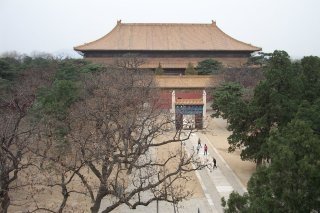
I visited the Ming Tombs on a day tour with a Chinese group. The trip, every day available for 50 yuan at the Qianmen bus stop, also took us to the Wall at Badaling. For the tombs, we stopped at Changling and Dingling.
Changling consists of three courtyards. It's a fine place to walk around. At Dingling, also known as the Underground Palace, you can go .. underground. About seven meters below the ground there is a series of large, hollow rooms. Here the coffin of Emperor Wanli was found, together with two of his Empresses.
Because of the tour, I didn't have the opportunity to see the Great Palace Gate or the Avenue of Stone figures. My guidebooks recommend those, to see it you have to go there on your own (by taxi for example).
Keep reading 0 comments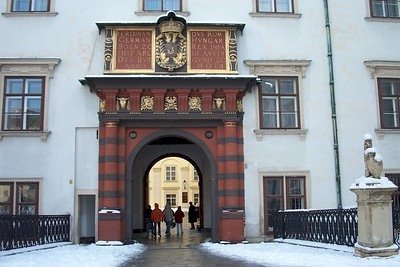
It's a joy to explore Vienna's center on foot. You don't have to worry too much about traffic, and this slow pace enables stopping every 5 minutes or so - to stare in awe at the buildings. Almost every one of them has special ornaments: iron balconies, circular towers, frescoes, statues, and marble pillars.
The City Hall ("Rathaus") is a relatively recent addition to Vienna's splendour (19th century). This huge building at the Ring is in neo-gothic style, and this way blends in very easily with its surroundings. Another highlight for me was the "Am Hof"-square - this is where the medieval predecessors to the Habsburg family had their main seat. Nowadays the fire brigade inhabits one of the magnificent buildings here.
Vienna was a pleasant surprise. Having visited Prague and several German cities, Vienna does stand out because of its overall character: its cleanliness, the condition of its buildings and the general chic atmosphere.
Keep reading 0 comments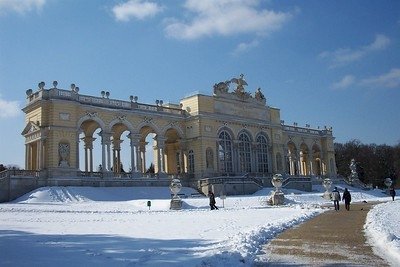
Although completely off-season, there were quite a number of other tourists around in Schönbrunn. Walking from room to room caught between two Spanish tour groups is no fun.
However, I experienced that the best things are to be seen outside anyway. Starting with the formidable yellow palace building itself. The colour of the buildings to the left and right is a shade darker, and shiny in the February sun. We spent quite some time walking in the huge garden, climbing to the Pavilion Gloriette. Here you can have some coffee and enjoy the view of the palace.
After visiting the Palm House, we concluded our visit at the Wagenburg. Old carriages are shown here: little ones for the princes and princesses, and big black ones used at funerals. Until 1918, the carriages were in frequent use by the royals. The oldest in the collection even dates from the 1760s.
Keep reading 0 comments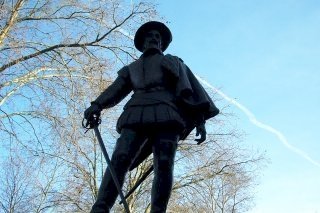
Greenwich is part of London, but actually more a kind of village to itself. Going there via the Dockland Railway you pass glittering skyscrapers and modern industrial scenery.
The National Maritime Museum is one of the attractions here: large, with well-presented exhibits. Next door is the Queen's House, a small white building where you really have to see the inside (lovely rooms!). On the hill behind these two buildings is the Royal Observatory - another must-see.
Besides these monuments, Greenwich is also a very attractive place for a walk. The distances are not big, and there are things to see on almost every street. The whole village has a good atmosphere. I found it a great destination for a weekend trip.
Keep reading 0 comments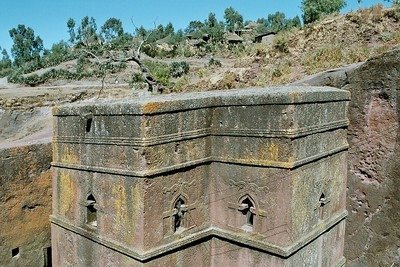
Lalibela is a small and quite poor mountain town. It is also the most prominent pilgrimage spot in Ethiopia, and it houses one of the most amazing manmade constructions in the world.
With a knowledgeable guide, I visited the 11 rock-hewn churches. Only when you go down the size and the outside carvings of the churches become clear. The fact that the places are still religiously important, also adds a lot of atmosphere: pilgrims, priests, and other clergy are abundant.
Keep reading 0 comments
To fully enjoy the Simien Mountains, I did a day trek here. From the town of Debark, they bring you deep inside the park, and in the company of a guide and a scout (with a gun), you can go hiking. The narrow paths circle around the mountain ridges, through grasslands.
In the park, several species of wild animals can be found. Most appealing are the baboons. They can be seen in groups, on cliffs and ridges. It took me almost the whole day to see some of them close up, but on my way back (around 6 pm) groups finally became active and in full view.
The best parts of the Simien mountains to me were the views and the canyons. And also its quietness: it is unusual for Ethiopia, not many people live here.
Keep reading 0 comments
The largest standing stele in Aksum I rate definitely as a world-class sight. In a way so simple and so pure. But also so mysterious: how is it possible that a civilization existed here 2000 years ago that was capable of constructing such great monuments?
In and around the center of Aksum, many more remains of the Axumite Empire can be found. It's a bit like walking around in Greece - ruins scattered here and there. There is the Queen of Sheba's Bath, King Ezana's stone, and King Kalebs Palace.
Another interesting thing to see in Aksum is the old St. Mary of Zion Church. Though not open to women, you can sit in the adjoining park and watch daily religious life go by.
Keep reading 0 comments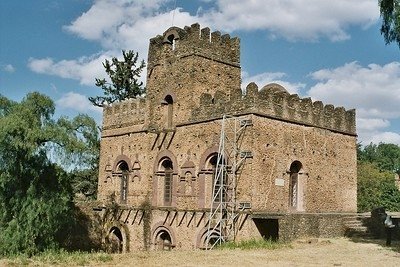
My first view of Gondar's heydays fell upon Fasiladas Baths. This pool lies in a rustic setting somewhat out of town. Sitting on the steps leading to the water, you can only imagine what it looks like during a major religious festival.
In the center of town, you find the Royal Enclosure. Here four castles and several other buildings from the 17th century remain. Still, the most prominent one is that of King Fasilades himself. Round-shaped towers characterize this European / Moghul-looking castle.
The whole historic area is amazing, and a pleasure to be in. Gondar's modern town is also a nice place to spend a few days.
Keep reading 0 comments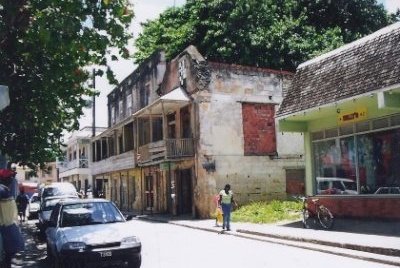
I was so surprised this one got in, I did not even prepare for it. I had to search old photo albums and digital collections for some pictures. In the process, I even retrieved a long-lost copy of my Bangladesh photos, so at least something good has come out of it! Finding Bridgetown photos proved to be hard ("Is this Bridgetown, or Speightstown?"). I never had gotten to paste the pics into the photo album and write captions. So I just guessed from the order they were in and double-checked them with photos of Bridgetown on the internet.
I went to Barbados for a week in the autumn of 2003. It's a tiny island, very built-up and touristy in some places. I did not enjoy my stay here, and even "fled" for a couple of days to the paradisiacal neighbouring island of Dominica.
But of course (and fortunately now) I did go to visit the capital Bridgetown. I went on a Sunday, and it was completely deserted. A bit rundown and spooky too. The only memorable part was visiting the Barbados Museum - located in the former prison of the Garrison. It shows the island's history, from the slaves to the cricket players.
Keep reading 0 comments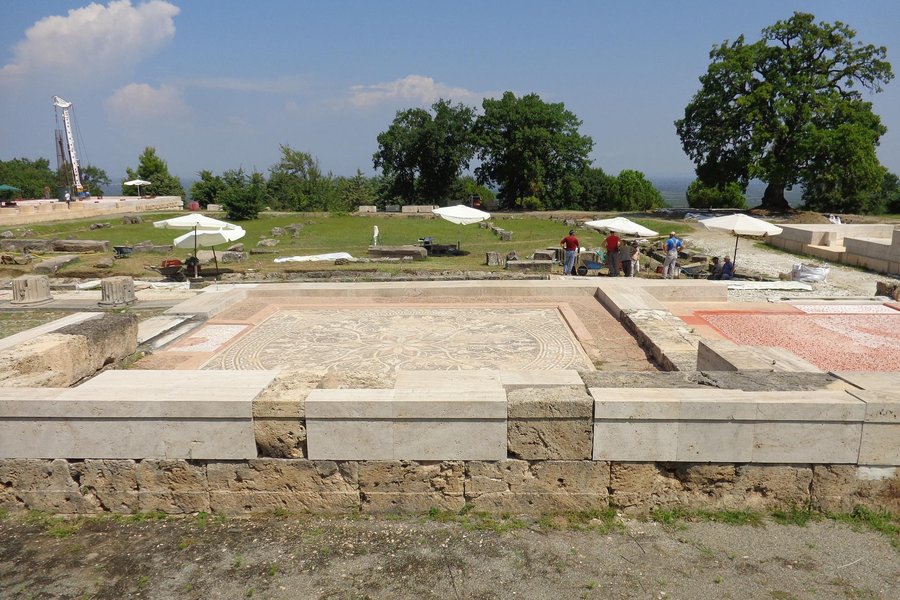
Vergina is situated near Veroia, some 75 kilometers east of Thessaloniki. The easiest way to get there is by car. Not for the first time in my world heritage hunting life, I had some trouble finding the site. It actually is very easy: the tumulus is like a small hill in the center of the town, with lots of souvenir shops nearby. The palace and the theatre are about 2 kilometers uphill.
The burial mound doesn't look inspiring from the outside, but when you go down inside you enter a magic scene. The place has a diameter of 110 meters and is 12 meters high. Currently, there is a fascinating combination to be seen of on-site remains (tombs, columns) and museum pieces taken from the site. A lot of sublime silverware was found (enough to equip a huge kitchen), but the golden crowns made of leaves are my favourite items.
The palace is just outside town, and more like a classic Greek sight. Unfortunately, the supposedly great mosaics were covered during my visit. However, this area and the theatre below are worth strolling around.
Keep reading 0 comments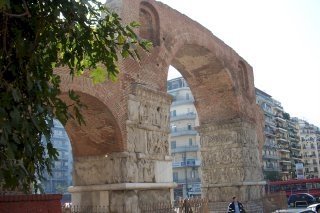
Thessaloniki is a typical large Greek city. This means four lane roads across the city center, creative parking and so on.
The city's most prominent landmarks are the White Tower (lovely posted near the sea) and the Ayia Sofia. This church has an imposing front, and quite distinguished interior. The main colours inside are a kind of dark green, black and bordeaux. Somewhat mystique, especially in combination with the scarce glimpses of sunlight that manage to get in.
There are also innumerable small Byzantine churches scattered around the city. Quite often they are hidden behind apartment blocks, or blocked from the view by parked cars. If you've got some stamina and good walking shoes you can visit several of them, and also enjoy their frescoes.
Keep reading 0 comments
Despite its fair number of inhabitants, Berne is an easy town to explore. Actually, there is one long road that crosses the old town. There you can walk under the covered promenade and admire the unique fountains.
During my stay, I enjoyed the tour to the interior of the Clock Tower the most. On this one-hour excursion, you get the chance to view the clock's medieval machinery in action.
Another rather strange place to visit in Berne is the Bear Pit. For ages, Berne has displayed live bears to remember where the city's name originated. Nowadays it's more like a zoo, but nevertheless, an interesting idea when you know that bears have been kept here for so long.
Keep reading 0 comments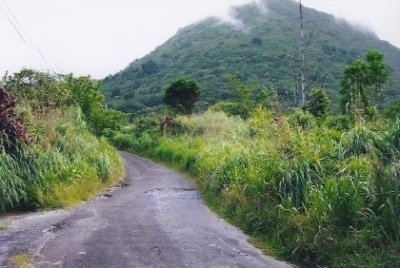
On my first night in Dominica I stayed in the village of Laudat, at the foot of the Morne Trois Pitons National Park. In the evening I enjoyed sitting on the veranda of my hotel, gazing at the green around me and enjoying the silence.
The next day, after a visit to Dominica's colourful capital Roseau, I visited Emerald Pool. This is also part of the world heritage site: it's a basin at the bottom of a waterfall in the jungle, with swimming pool quality.
Keep reading 0 comments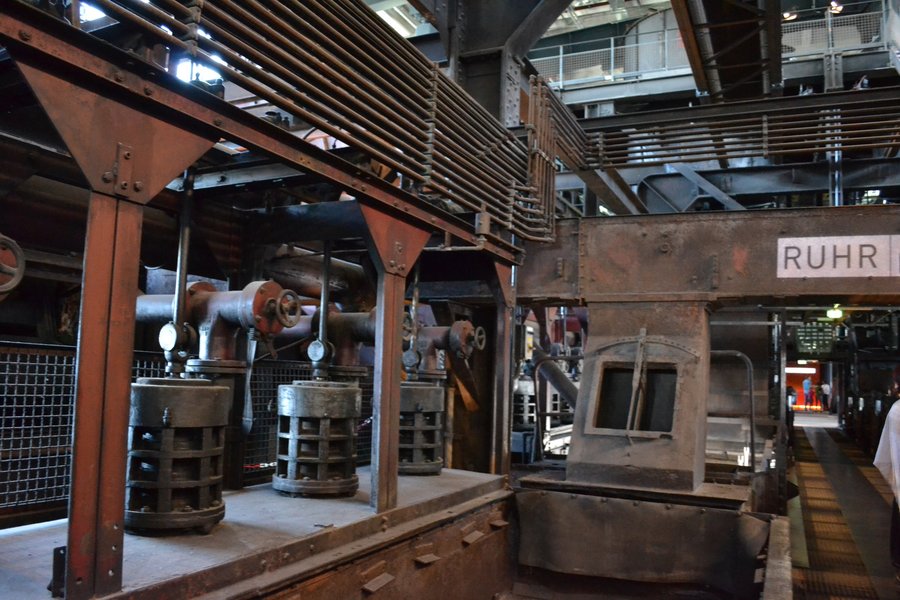
I found it a bit spooky to walk here on my own on a quiet Sunday morning. The complex is huge, with multistorey buildings, bridges, railway lines, and towers. All in the same dark red colour.
Since the mining here stopped, nature is beginning to win back its territory. Most of the railway tracks and the smaller industrial leftovers are now covered with moss, grass, and weeds. This adds a special atmosphere to the place - a good location for a film director to shoot a thriller.
Many of the buildings nowadays are used for art exhibitions. The Red Dot Design Museum is worth a visit both for its collection of contemporary design and to take a look inside one of the industrial halls.
Keep reading 0 comments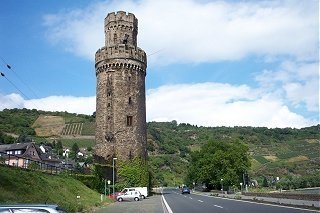
By car, I drove on the left side of the Rhine from Koblenz to Bingen. There I took a ferry and drove the same 55 km back. This is a really great way to enjoy all the wonderful views in this area.
The funny thing is that you get the best views of the monuments on the opposite side of the Rhine. So when you see a really nice castle, the Rhine is always between the castle and yourself.
However, I did enter some of the most interesting ones. The Marksburg Castle is surely not to be missed. It still is quite intact, and there are guided tours that take you into the Middle Ages (at least for an hour or so).
Keep reading 0 comments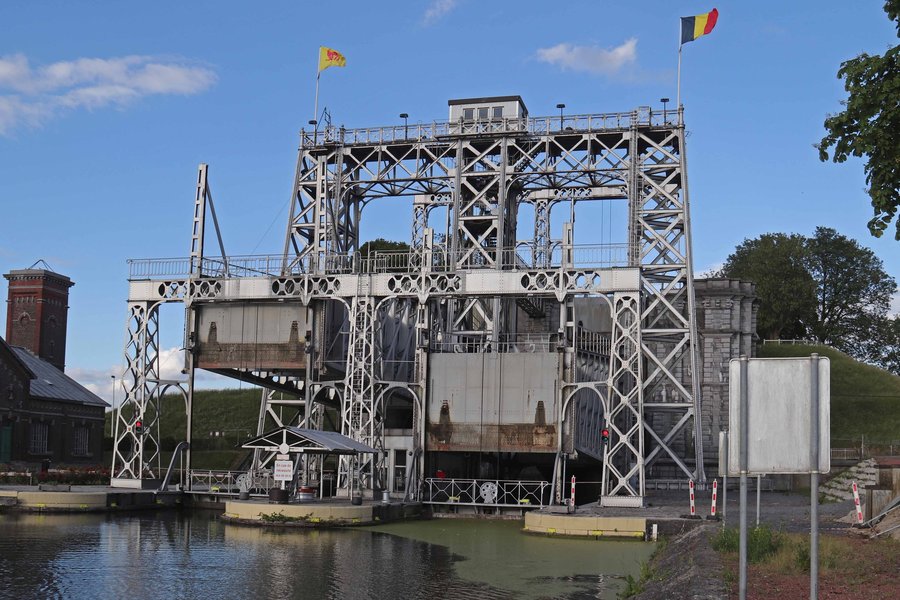
The Four Lifts can be found in the Canal du Centre between La Louvière and Mons. The road to the lifts (ascenseurs in French) is well-signposted from the E19 highway coming from Brussels.
First I visited Lift no. 3. That one is situated in a small town that has seen better days. I was amazed to see the old buildings that surround the lift: it looked as if I had arrived in Northern England! The Industrial Revolution has left a large mark on Wallonia, and certainly in this region.
A few kilometers away you can take a look at Lift no. 1. You can walk around this one and take a closer look. Unfortunately, there were no ships in the canal, so I haven't seen the huge construction in action.
Keep reading 0 comments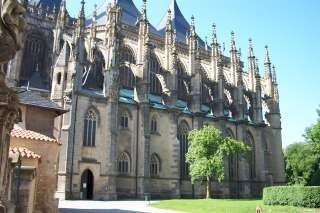
Kutna Hora presented itself to me as a charming and quiet town. I stayed there for 4 days (in Hotel Garni Na Havlicku, recommended). Quite a lot of restaurants there have garden terraces, and the food is good and cheap. Actually, everything is.
My sightseeing in and around town brought me to the Italian Court. During Kutna Hora's silver rush this functioned as the Royal Mint. The interior is palace-like. Also worth mentioning is the Ossuary in Sedlec. This freak sight dates from 1870 - when Frantisek Rint decided to become creative with the bones of the 40.000 people buried here.
And I didn't even get to see what is reported to be the highlight of Kutna Hora: an underground tour through the silver mine shafts. At this time of year (and on weekends) you really have to pre-book this guided tour. Unfortunately, I wasn't aware of that. But Kutna Hora was really worth visiting anyway.
Keep reading 0 comments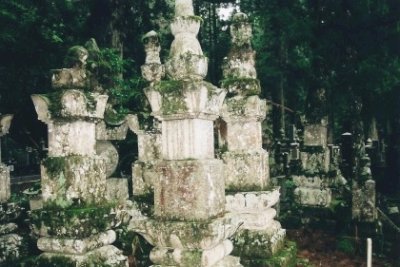
The most well-known part of this WHS - Koyasan - I visited on my second trip to Japan. This temple town has the usual Japanese abundance of souvenir shops and restaurants: don't expect it to be very serene.
Most of the temples are grouped in the western part of town. Their designs are all very different. Okuno-In, the temple that houses the body of Kobo-Daishi, is on the other side of town. Going there you have to cross a large cemetery, covered in moss and hidden under huge dark trees.
An experience not to be missed here is staying overnight in one of the temples. The local Tourist Information can arrange this. The Fudo-In was my accommodation: very quiet (only 2 young monks seemed to be living there), with great food and a fine traditional bath.
Keep reading 0 comments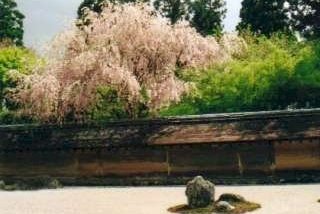
After two visits I still only have seen a fraction of all the temples in Kyoto. Most remarkable are the big differences between them (probably caused by the fact that they were built during several periods within the long heydays of Kyoto).
For a first-time visitor I would recommend Ginkaku-ji (the Silver Pavillion), Ryoan-ji (to sample a fine Zen garden) and Daitoku-ji (no worldheritage status, but a lovely complex to walk around).
Keep reading 0 comments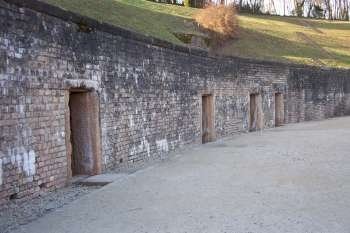
Trier is a small city in southwest Germany, very close to Luxemburg. It has an excellent location along the Moselle River. At first sight, it looks like a 'normal' German town, but you don't have to walk far to come eye to eye with Trier's Roman heritage. There's even so much of it that you get the impression that by accident you've been stranded in a German town in Italy.
There's a lot to see here, so I'll name some of the highlights. The large Dome of course, and the baths. And, somewhat out of the center of town, the huge Amphitheatre.
Really interesting also is the regional museum. One room there exhibits large mosaics in good condition that have been found in Trier. At the heart of the museum, an ornamented light blue grave monument is the centerpiece of the attraction. How beautiful the streets of Trier must have looked in Roman Times!
Keep reading 0 comments